Video Rewind tells the stories behind forgotten VHS favorites from the video store era, one rental at a time! This month’s movie is 1994’s “The Shadow”.
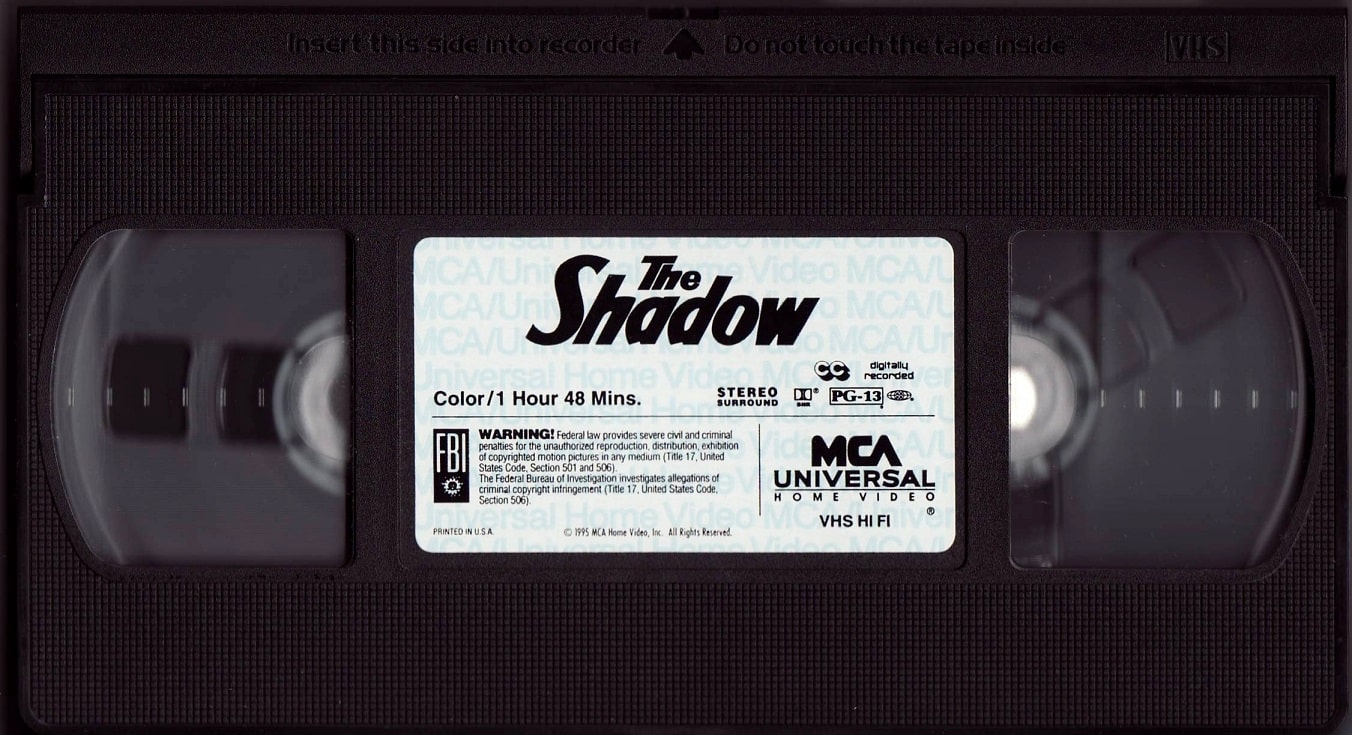
Five years after the release of Batman and two years after Batman Returns, 1994’s The Shadow drew expected comparisons to the caped crusader. With both films being dark stories featuring a wealthy, city dwelling playboy with a crime fighting alter ego, screenwriter David Koepp looked for an angle to differentiate The Shadow from the record breaking Batman films.
He found it in The Shadow‘s tagline: Who Knows What Evil Lurks in the Hearts of Men?
The answer is The Shadow knows, as Koepp explains, “I decided that perhaps it was because he was uncomfortably familiar with the evil in his own heart. Because he’s participated in such evil.” Whereas the Batman character was built around vengeance (avenging the death of his parents), The Shadow would center around redemption for past sins (being a ruthless drug kingpin in East Asia).
The irony of The Shadow being compared to Batman is that artist Bob Kane says he drew inspiration from The Shadow when creating the Batman character in 1939.
The character of The Shadow debuted in the summer of 1930 as part of the Street & Smith’s Detective Story Hour radio program.
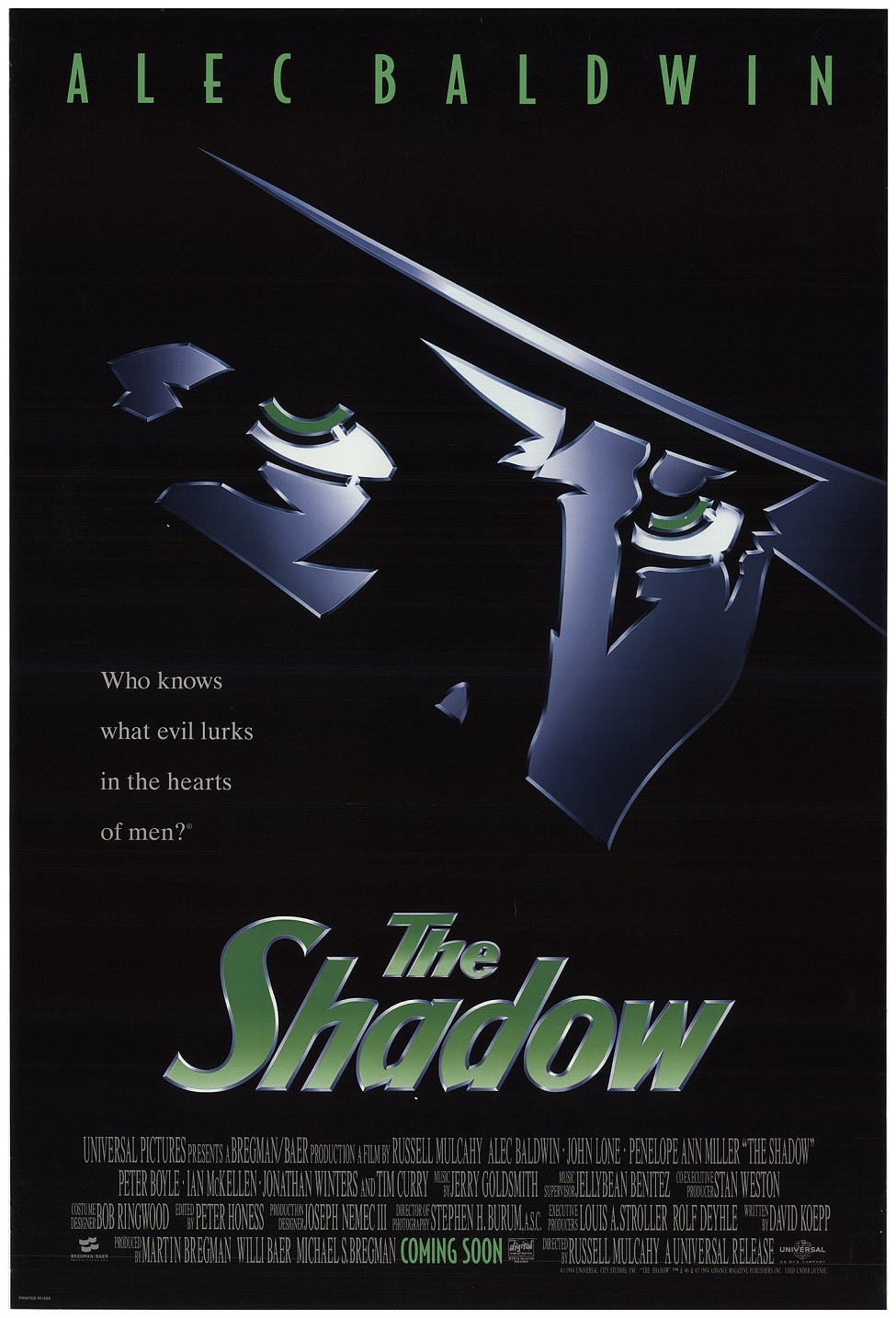
By 1937, The Shadow had grown into its own radio drama, with a 22 year old Orson Welles voicing Lamont Cranston, a young socialite who travels through East Asia and resurfaces in New York City with an invisible, crime fighting alter-ego known as The Shadow with the ability to cloud the minds of men. Welles would leave the show in 1938 to start Mercury Theater on the Air, which in October of that year caused Americans to panic thinking an alien invasion was underway during his legendary broadcast of War of the Worlds.
Over the following 15 years, The Shadow would appear in a hugely successful run of monthly pulp mystery novels as well as comic strips, television shows, and seven feature films. But by the mid 1950s, The Shadow seemed to run its course while Batman continued to thrive in popularity.
However, in Hollywood, no idea or property is ever truly dead.
In 1982 producer Martin Bregman (Serpico, Dog Day Afternoon) bought the rights to The Shadow with the intention of bringing the character back in a new adventure on the big screen. Sam Raimi, whose no budget horror flick The Evil Dead gained enough of a following to justify Evil Dead 2 in 1987, lobbied hard to direct The Shadow. But with the huge success of Back to the Future, director Robert Zemeckis was tapped to direct the adaptation first.
Raimi, aware of the impossibility of out-dueling Zemeckis for the job, decided to move on and make a pulpy, dark anti-hero of his own, 1990’s Darkman starring Liam Neeson. After a couple of years went by without a script that could be agreed upon, Robert Zemeckis eventually left the project, and The Shadow was barely treading water without a director or a proper script.
Enter David Koepp, a screenwriter who, while much too young to remember the original The Shadow radio program, was very familiar with the character and his dark adventures.
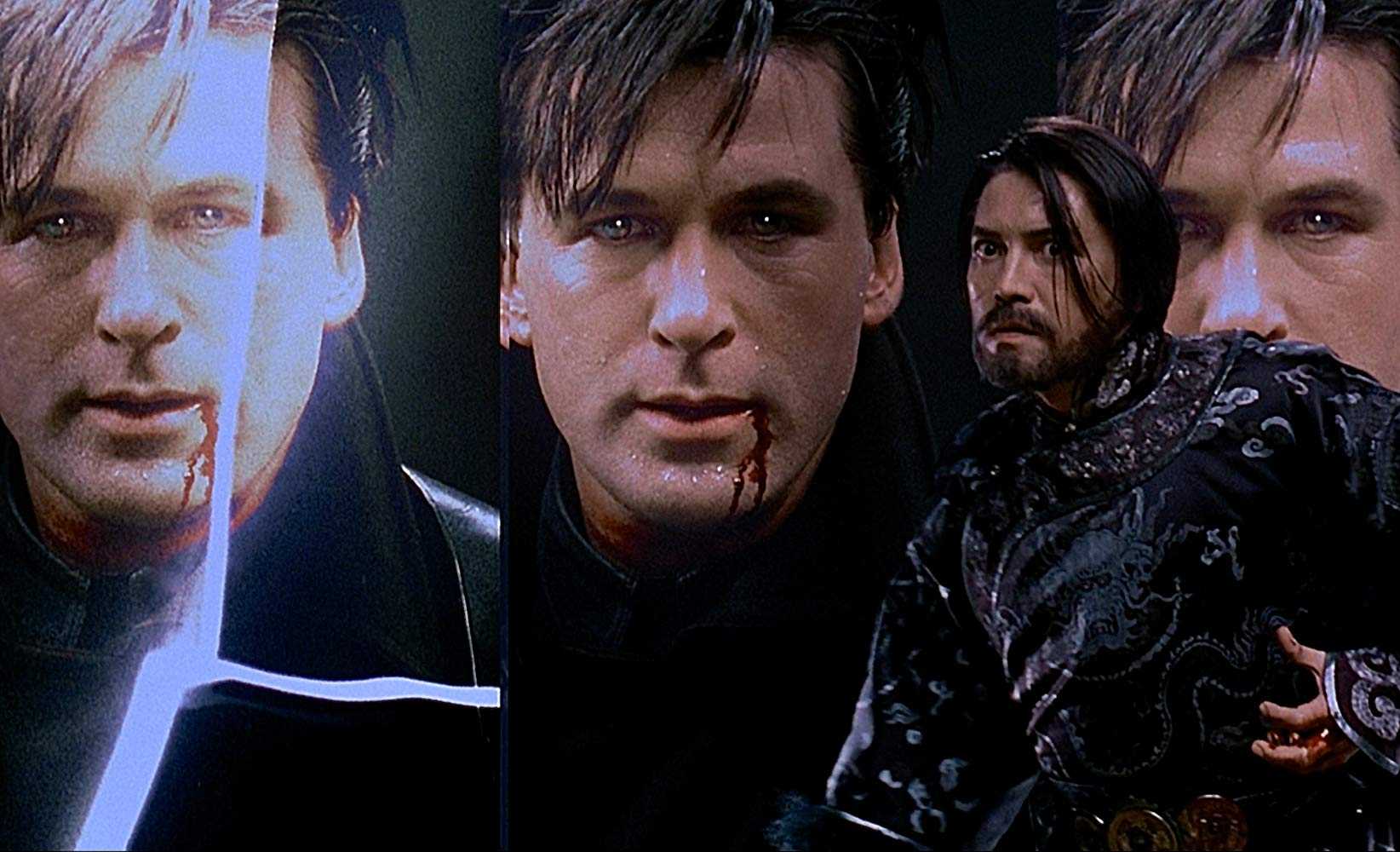
”I remembered the radio shows from when I was a kid. On Sunday nights, CBS Radio Mystery Theatre, hosted by E.G. Marshall reran The Shadow every Sunday at 10.”
This personal knowledge of the material combined with reading a number of the old pulp novels, allowed Koepp to write a script that properly captured the spirit of the character. “I drew a lot of specifics from the pulp novels, but the tone came from the radio show,” Koepp explains, describing his The Shadow script as “kind of a hybrid.”
The early 1990s were a busy and exciting time for Koepp, who was under a 4 year contract with Universal.
This type of deal was commonplace in the old studio system of the golden age of Hollywood, but hardly the norm in the age of summer blockbusters. Koepp wrote five films in two years, gaining attention with Death Becomes Her starring Bruce Willis, Goldie Hawn, and Meryl Streep, and gaining accolades for the critically praised, box office juggernaut Jurassic Park.
While writing the script for The Shadow, Koepp worked very closely with producer Martin Bregman. “I ran it by him at every stage. He’d been working on this for years, so I had to respect that.”
Koepp had Alec Baldwin in mind the whole time while writing the script.
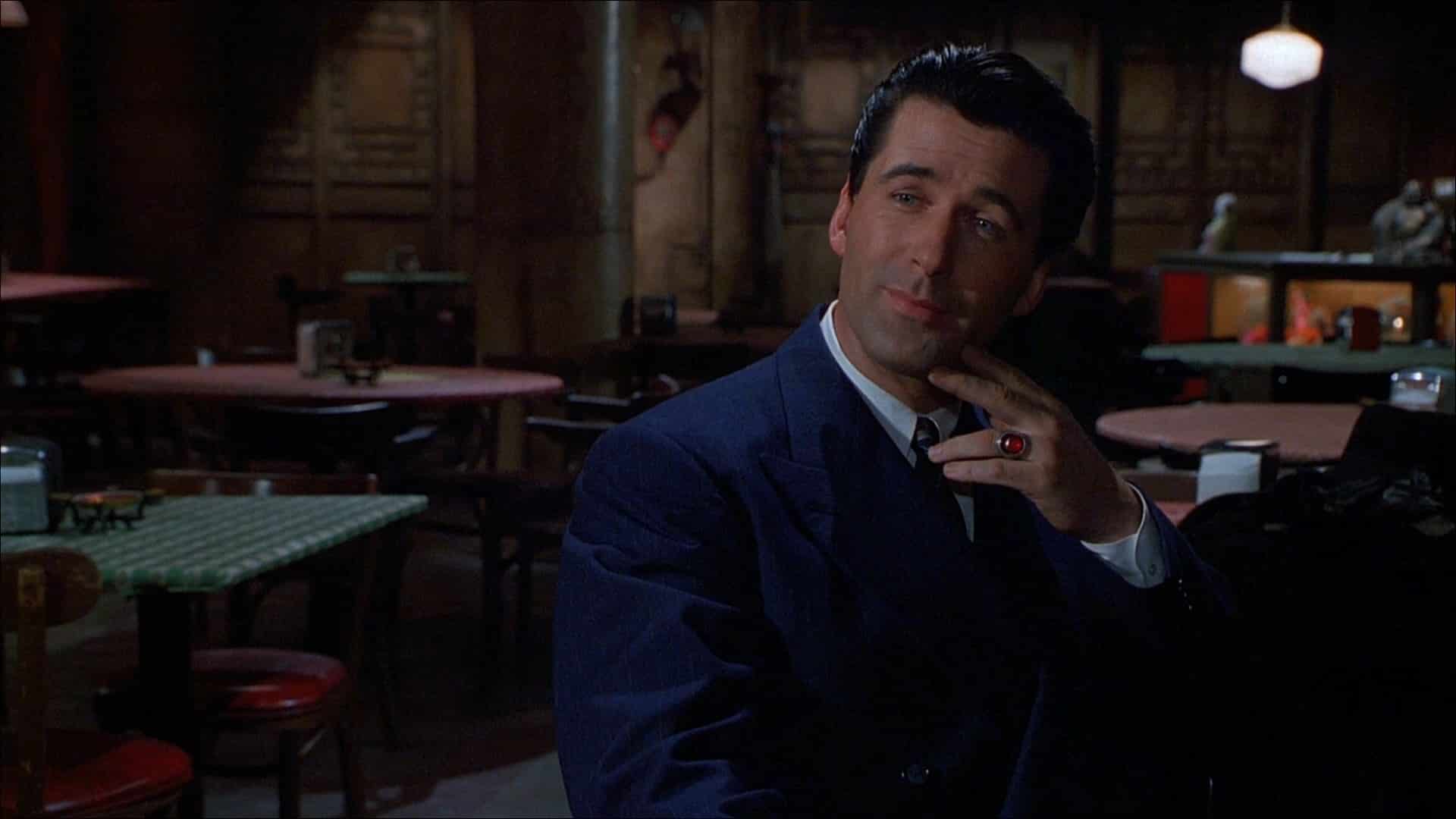
“In addition to being a great actor, he has the eyes and the voice; he had so much of what I pictured Cranston being. And then we were lucky enough to get him.”
Producer Martin Bregman agreed that Baldwin would be perfect for the role of Lamont Cranston and his alter ego, The Shadow.
“I think he’s an old-fashioned movie star. He’s a heroic-looking figure. He’s somebody who looks like he came out of a 1930s film.”
After Beetlejuice (1988) and The Hunt for Red October (1990), Baldwin was recognizable to audiences, if not yet a proven box office star. Still, the actor possesses an unmistakable dashing and mysterious look, making him an inspired choice to play Lamont Cranston.
As for finding the right director, Russell Mulcahy was currently directing Kim Basinger, Baldwin’s wife, in The Real McCoy, a crime-thriller released in 1993. The producer of The Real McCoy was none other than Martin Bregman, and Bregman wanted to work with Mulcahy again and offered him the job to direct The Shadow.
Basinger, who played reporter Vickie Vale in 1989’s Batman, joked with her husband about landing the lead role in The Shadow, saying, “Why would you want to bother doing that? You’re never going to make as much money as we made. We already dominated that category.”
The comparisons to Batman came early and often.
Russell Mulcahy directed over 400 music videos in the 1980s, including the first ever to air on MTV, “Video Killed the Radio Star” by The Buggles. Mulcahy would direct videos for music legends such as Duran Duran, Billy Joel, Elton John, The Rolling Stones, and Rod Stewart. Mulcahy’s notable features from the decade were the 1984 killer boar horror flick Razorback and the fantasy-adventure Highlander in 1986.
The Australian born director showed visual flair and plenty of promise, but it was really the script from Koepp that served as a major draw for Alec Baldwin to sign on to The Shadow.
The actor said that “drama was the flame that drew me to this business. I wanted to be an actor by watching old Bogey, Cagney and Edward G. Robinson movies.”
Baldwin was so taken by these films that he enrolled in acting classes at New York University and the Lee Strasberg Institute after graduating in pre-law. The actor would do his college thesis on method acting, landing an interview with Al Pacino and asking him over 100 questions in the span of 7 hours at his home. Baldwin said the experience “invigorated” him.
In addition to searching for a good, dramatic script, Baldwin recalled his love for old black and white, tough guy movies.
“I love a period when all men wore hats, and all women dressed before they went out of the house.”
Baldwin seemed to find these qualities in Koepp’s script for The Shadow.
“Koepp was at the top of his game back then, making one big movie after the other.”
Koepp’s involvement not only wooed Alec Baldwin but was also a deciding factor for Penelope Ann Miller to join the project as well, playing Lamont Cranston’s love interest and fellow telepathic Margo Lane.
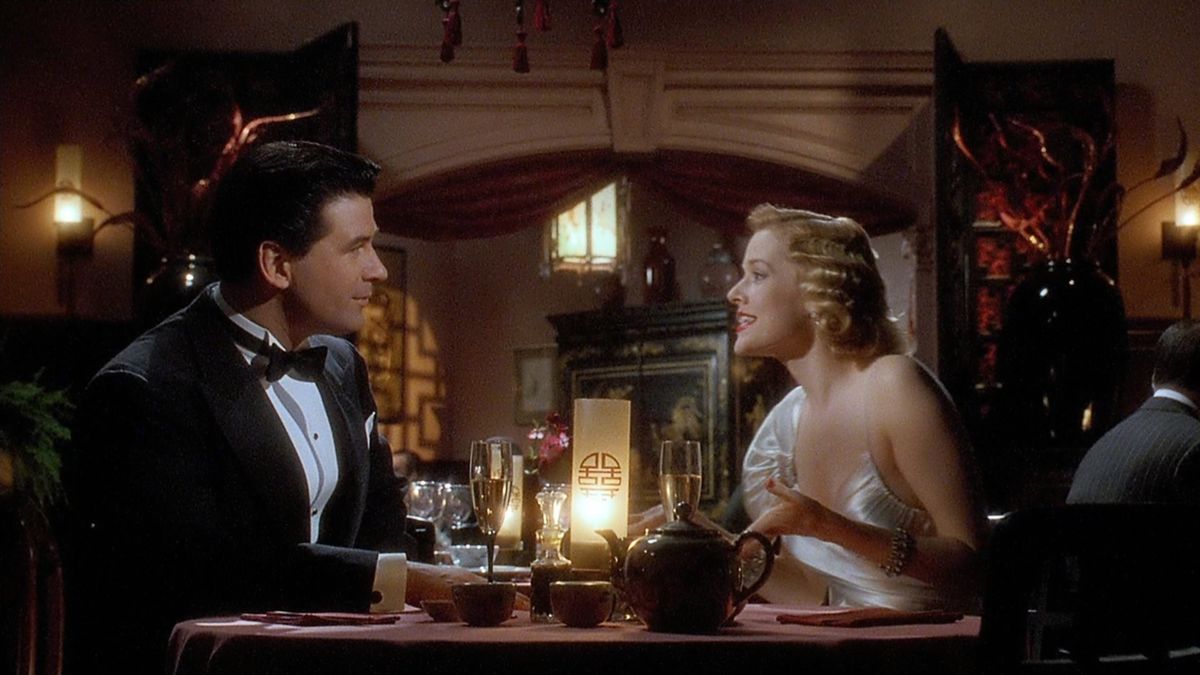
(The character is long rumored to be the cousin of Metropolis reporter and Superman love interest Lois Lane).
Miller starred in another Koepp script in 1993 opposite Al Pacino and Sean Penn, the crime-thriller Carlito’s Way directed by Brian de Palma. and the actress relished the opportunity to work with Koepp again.
“The Shadow was a completely different movie. He’s a prolific writer and so talented. It was really an honor to be part of another one of his great scripts.”
The first eight minutes of The Shadow function as an origin story for The Shadow character.
Having decided to sink into dark obscurity in post World War 1 Tibet as a drug kingpin, Lamont Cranston is chosen to help man in his struggle against evil in exchange for redemption of his soul. The compromise is forced upon him by a powerful holy man named Tulku, with his mystical flying dagger forcing Cranston to comply. It’s under the tutelage of Tulku where Cranston learns the power to hypnotize and become virtually invisible, with only his shadow able to be seen.
This segment feels a bit unnecessary, and the addition of a written explanation scrolling across the screen essentially recapping the purpose of the sequence only proves to further discredit its usefulness. Then again, today’s Hollywood would convolute and expand that eight minutes into a full length feature and sell it as a prequel, so the opening backstory here can be forgiven.
Triggering the drama of Koepp’s script is a villain taken from the pulp novels, Shiwan Khan (John Lone, in a role once considered for Hong Kong superstar Yun-Fat Chow), a follower of Tulku.

Koepp says he chose Shiwan Khan because “he was bold…he wanted to conquer the world.” Shiwan is a descendent of Genghis Khan and mysteriously arrives at a museum in 1930s New York, encased in the sarcophagus of his evil decedent.
Shiwan Khan wants to fulfill Genghis’s plans of world domination, and he uses his hypnotizing power to take hold over Reinhardt Lane (Margo’s father, played by Ian McKellen), a scientist researching the power of energy. Khan’s evil master plan is to have Reinhardt construct the world’s first atomic bomb, the ultimate power to have at his disposal.
The film is peppered with striking set design throughout, all inspired by a combination of science fiction magazines, pulp novels, and detective films from the 1930s.
Reinhardt’s lab consists of orbs connected by ribbed cables producing visible waves of traveling electricity, smoking potions of different colors in beakers of various sizes, and countless levers and buttons on long, bulky control panels. The city streets are wet and dark with steam rising from manholes, populated by seedy bars for the working class and lavish clubs for the rich (like the one where Lamont Cranston meets Margo Lane), all with the endless sprawl of tall buildings in the background, a stylish painted backdrop.
This production design by Joseph C. Nemec III takes into account what listeners of the radio program would have imagined in their minds back in the 1930s, basing their visions on what little they saw in films or magazines such as Amazing Stories or True Detective.
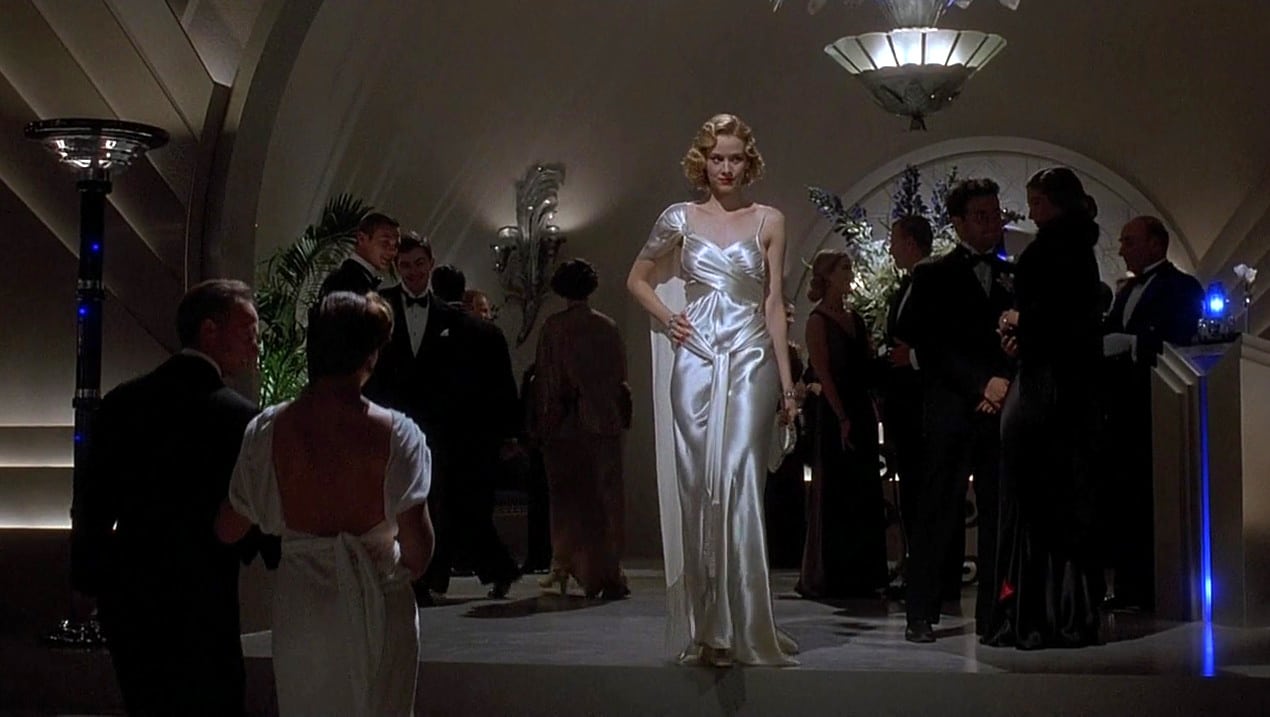
The dangers of man and growing technology and the mystery of a blonde in the moonlight ruled the pages of these magazines, so too do they rule the story in 1994’s The Shadow. Cinematographer Stephen H. Burum (Body Double, The Untouchables) understood the visual language needed to tie these elements together, shooting and lighting The Shadow in a classic film noir style.
If the casting of Alec Baldwin was spot on for the role of Lamont Cranston, adding to the 1930’s aesthetic with his classic leading man good looks, Penelope Ann Miller as Margo Lane was just as inspired a choice.
The actress embodies the elegance of the period and looks striking in her ribboned, 1930’s hairstyle, fur coats and low cut, silky dresses. Burum’s lighting focused on Miller’s eyes, illuminating her glamorous beauty. Her performance matched her classic look, as Miller’s scenes with Baldwin, where the two exchange quick, witty banter, feels right out of a Katherine Hepburn-Cary Grant screwball comedy.
Her beautiful, golden age of Hollywood good looks was not lost on other casting directors, as Miller appeared in the 1920s era film Chaplin in 1992 and years later in 2011’s Best Picture winner, the silent film love letter The Artist. Her performance in The Shadow would earn Miller a Saturn Award nomination from the Academy of Science Fiction, Fantasy & Horror Films.
Burum and Mulcahy also used small visuals to build upon what was originally conceived as a radio program.
One example is when Lamont Cranston uses his telepathic ability to cloud minds. As Baldwin says aloud in a hypnotic, lulling voice what he wants the other person to think, a shadow falls across the shot, darkening all of Cranston except his eyes. That other person then repeats what Cranston wishes, as if they were their own thoughts just occurring to them.
The darkening of the shot is a simple yet dramatic visual that shows how film can effectively enhance what was once just an auditory story. This combined with the slightly altered sound of Baldwin’s voice is a subtle example of audio and visual technique working together, the old radio program merging with cinema to add new storytelling elements to The Shadow.
One element of the radio show that didn’t translate to the screen was the famous laugh of The Shadow. The viewer never sees Baldwin doing The Shadow’s laugh as heard on the radio program saying, “it worked spectacularly well for radio but didn’t work on film because you have to marry the sound to a visual image.”
Ultimately, the image of Baldwin laughing as The Shadow just didn’t look right as a visual, but sounded fantastic coming from off camera.
Baldwin said he perfected the trademark laugh in 15 minutes, and it is heard throughout the film whenever The Shadow appears.
Upon meeting her, Cranston is already wary of Margo Lane’s own telepathic abilities (lots of telepathics in this movie), and is nervous of her finding out his secret identity. But Shiwan Khan knows that Margo is close to Cranston, and when he uses his hypnotizing powers on Margo in an effort to get her to kill Cranston, she figures out exactly who Cranston is during their confrontation.
Mulcahy’s extensive experience directing music videos comes in handy during this revealing dream sequence where Margo Lane learns of Lamont Cranston’s past.
In the scene, Margo is engulfed in windblown flames as she glimpses Cranston in Tibet as his former self, witnessing the evil man he used to be. The whole scene looks straight out of countless music videos from the 1980s, and Miller recalls feeling the heat of real flames on her face and not wanting the fear she felt to show in her eyes.
Pyrotechnics and 1980s music videos go together like a wink and smile, and the beautiful Penelope Ann Miller — in her blowing, silky 1930’s dress surrounded by flames — would be a memorable image on the cover of any rock album.
(On a side note, this scene could have explained Cranston’s backstory, rendering the opening eight minutes unnecessary.)
Another winning aspect of the film was the score from Jerry Goldsmith (Gremlins, L.A. Confidential).
Goldsmith’s score is a dramatic rise of horns and brass, no doubt taking some cues from Danny Elfman’s Batman score. But Goldsmith infuses his score with a more mysterious quality and is less imposing. The Batman score does more to heroically and confidently present Batman, whereas The Shadow score is darker and more subtle, working instead to support the question asked in the film’s tagline: Who Knows What Evil Lurks in the Hearts of Men?
After Cranston snaps Margo out of the trance that Shiwan Khan put her in, the two team up to save both Margo’s father and the city from Khan’s evil plan. The story takes a while for all of the pieces to connect, and by the time the evil plot of Shiwan Khan is discovered and ready to be foiled, there is a lean 25 minutes left in the film.
While Margo and her now free father go to disarm the atomic bomb, the inevitable showdown between The Shadow and Shiwan Khan takes place in an otherworldly, mirror lined mindscape. Shiwan Khan uses the same mystical flying dagger as seen in the opening, subduing The Shadow and almost putting him under Khan’s control forever.
The showdown ends rather quickly with shattering mirrors and flying glass filling the space. In line with the rest of the film, the scene makes for a cool visual sequence, but the finale feels rushed and leaves the viewer short changed.
This rushed final sequence is the result of Mother Nature and bad timing.
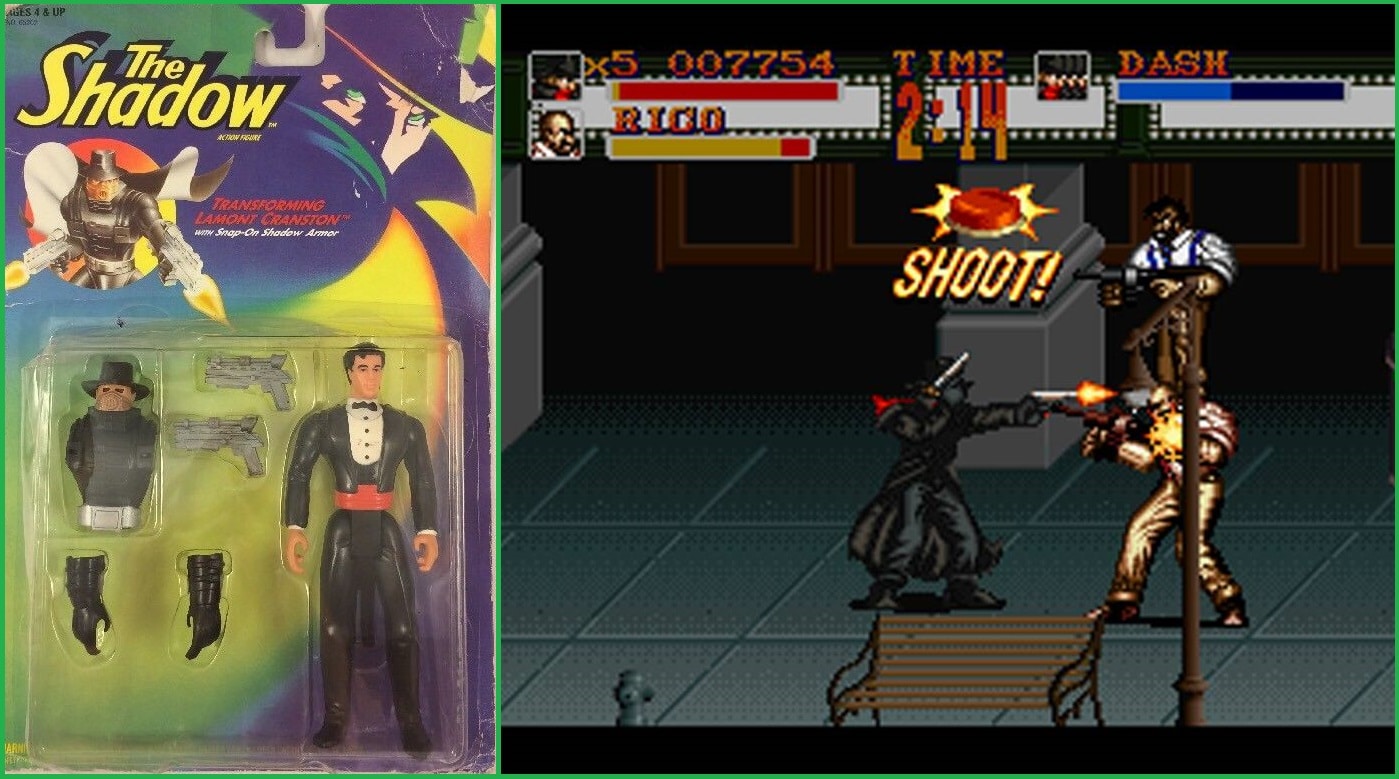
The vast majority of filming for The Shadow took place on sound stages located on the backlot of Universal Studios Hollywood. Towards the end of principal photography on January 17, 1994, a 6.7 magnitude earthquake heavily damaged several sound stages, including the mirror set seen in the finale.
With Universal suffering $42 million in damage, the decision was made to use the footage that was filmed and scrap the remainder of the originally planned longer sequence.
The Shadow was poised to be a big summer release, opening in theaters on July 1, 1994, with hopes of kicking off a new franchise for Universal.
Action figures and clothing lines were released as product tie ins, and Ocean software developed the video game for Super Nintendo. But after the entire box office run of The Shadow failed to gross what Batman made in its first weekend of release, toys and clothes hit the bargain bins and were pulled from shelves, and the video game release was canceled (playable files have since leaked online).
Crushed by The Lion King and The Mask, The Shadow stalled out at a $32 million haul in America, failing to make back it’s estimated $40 million budget.
Critical response was mixed at best, with most reviews leaning negative.
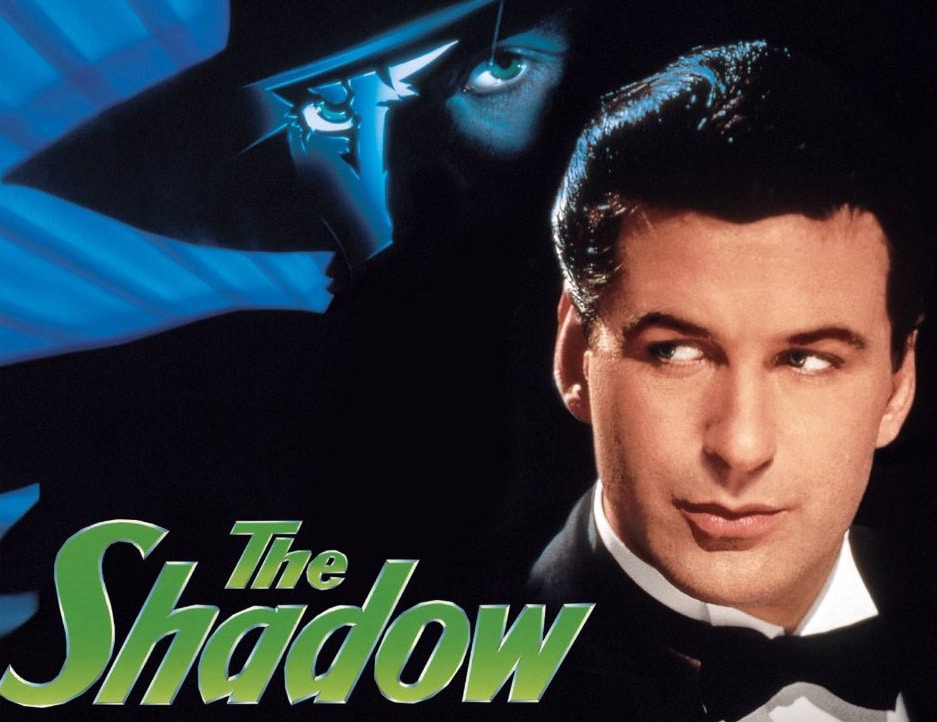
Entertainment Weekly gave the film a D, citing the clash of heavy visual effects in the low-tech world of the 1930s, writing, “we become all too aware that the actors are simply standing around B-movie sets spouting cardboard dialogue,” (the film would later be included on the magazine’s list of the ’21 Worst Comic-Book Movies Ever’).
Roger Ebert was kinder to the film, seeing what Mulcahy and Burum were going for when he wrote, “if you respond to film noir, if you like dark streets and women with scarlet lips and big fast cars with running boards, the look of this movie will work some kind of magic.”
Despite his early praise and excitement for Koepp’s script, Alec Baldwin would later discuss his time on The Shadow as a seemingly unpleasant experience. During an interview while promoting the survival thriller The Edge in 1997, Baldwin said, “The Shadow was an endlessly tedious movie to do, because it had very little real dialogue to sink my teeth into, just lots of effects.”
It appears as though the actor was left unfulfilled by his work on the film, and ultimately David Koepp’s script became muddled during production.
Director Russell Mulcahy would also later hint at creative differences during production saying, “I think he [Bregman, the producer] wanted to make more of a 1940s retro romantic film. And so we did have some discussions about ‘we should add more fantasy into this film, more effect.’ So I think there’s sort of a crash of visions.”
The Shadow was released on VHS on January 17, 1995, and hit video stores to rent on February 7, debuting at number 24 on the rental charts. The film stayed in the top 40 rentals for 14 weeks and peaked at #7, but The Shadow did reach #1 in laserdisc sales.
Like several other comic adaptations from the time, including Dick Tracy, The Rocketeer and The Phantom, The Shadow has gained somewhat of a cult following in subsequent years.
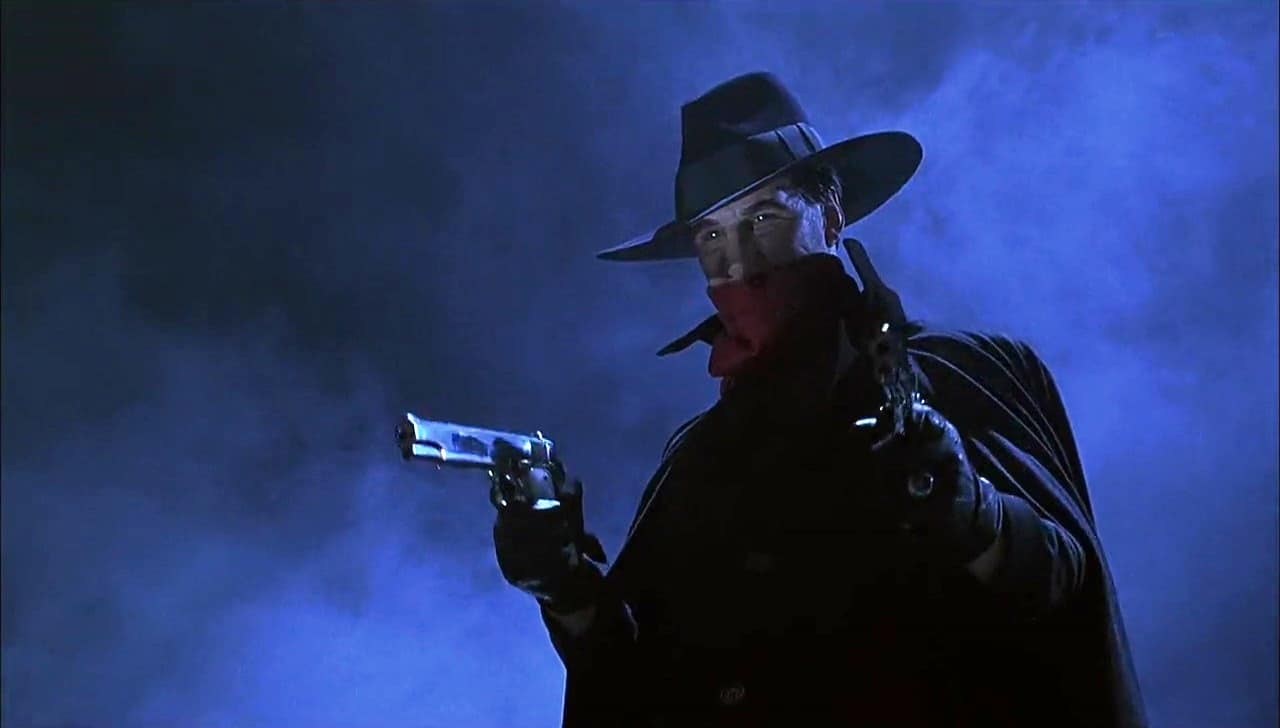
The film has since been re-examined as a flawed but visually dazzling adaptation, one of technical achievement in style and vision. The film deserves that much. David Koepp’s script may have commanded the attention before production, but it’s Mulcahy’s vision that has commanded it since.
The Shadow is without question over the top and even goofy at times, like Shiwan Khan and his gang of Tulku followers walking around the streets. But the film is so confident in its goofiness that it crosses over to charming.
“It’s a huge entertainment,” Bregman said, “I wanted to make a film that was a little bit over the top. You can’t take it seriously.”
For example, the film winks at its source material more than once, adding a fun layer of self awareness (“I think they just made up The Shadow so people will listen to the radio more,” says one character listening to a news report). The story has a lot of moving parts that clunkily connect in a script that seems to have been lost in translation, just as the film was lost in a summer of blockbusters.
But if the movie is watched in the same way one would read a pulp novel, the huge entertainment of The Shadow will not be lost on the viewer.


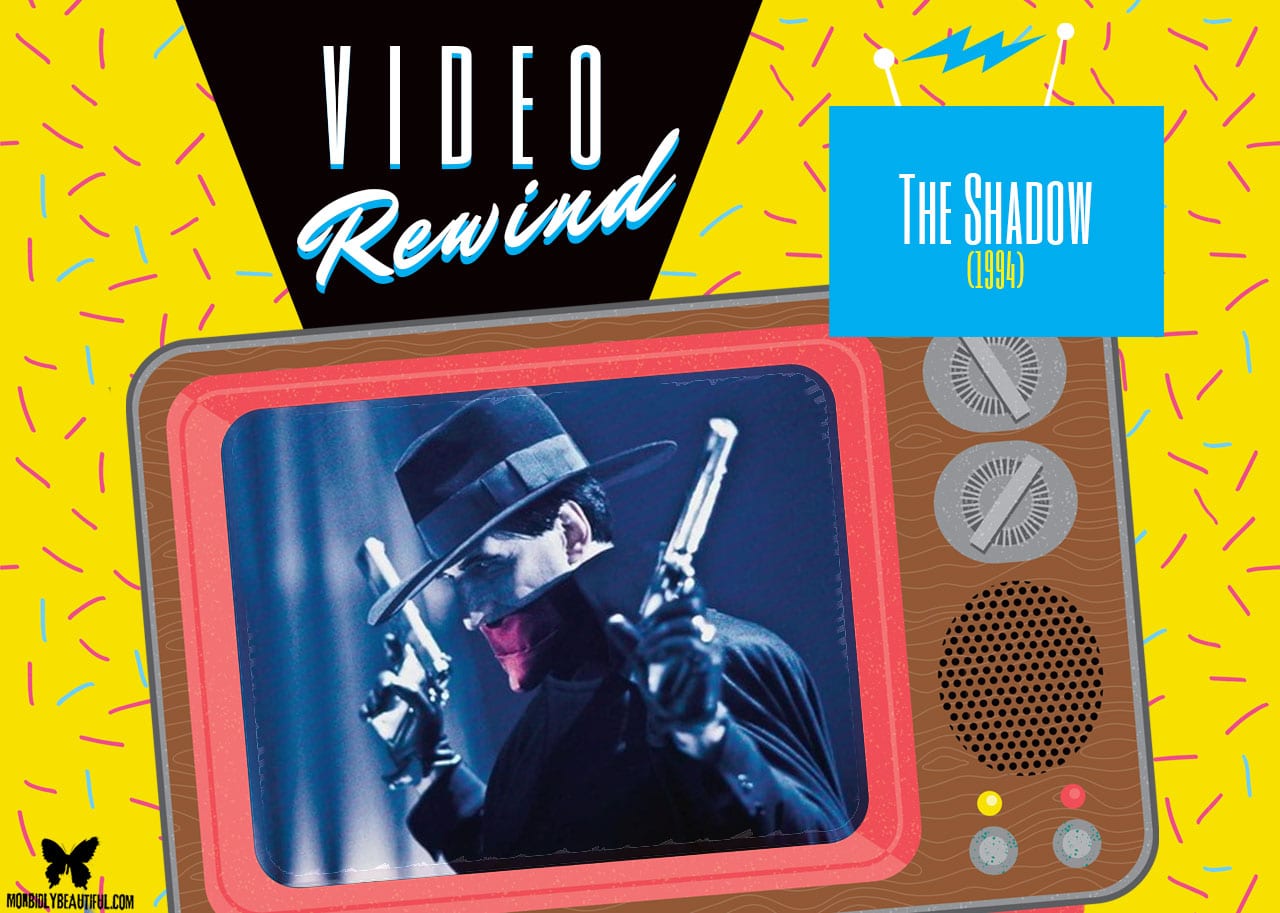

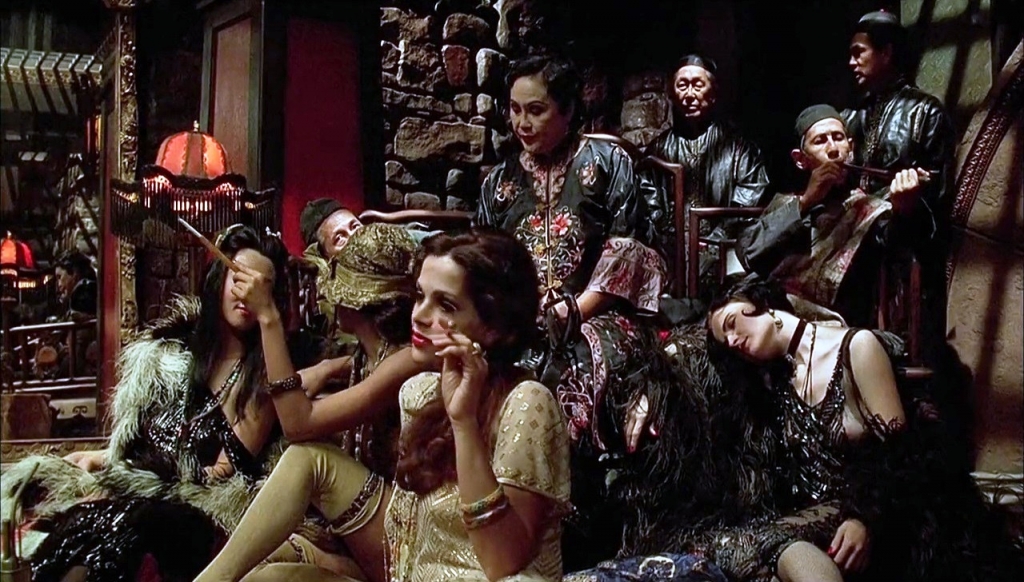
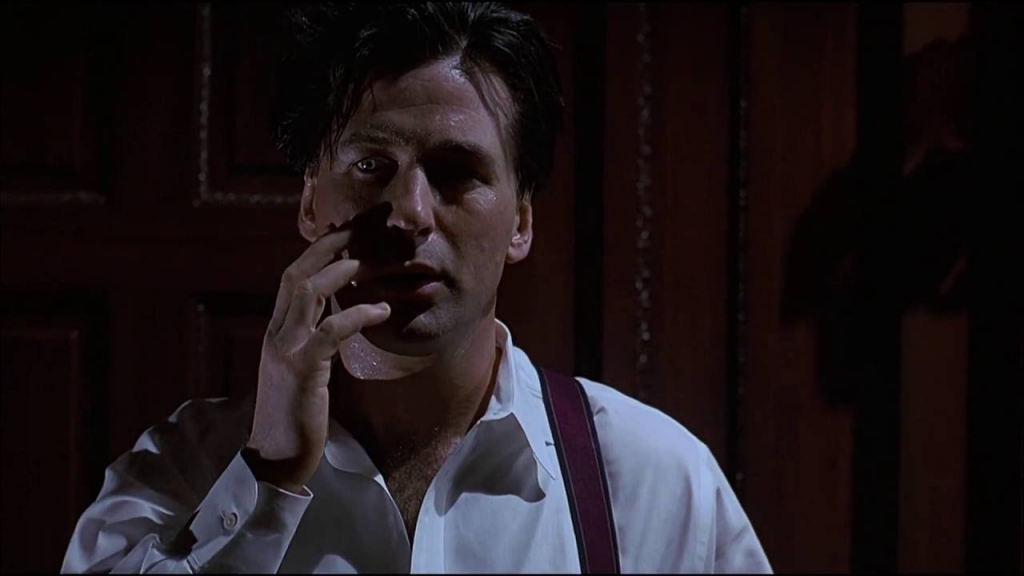
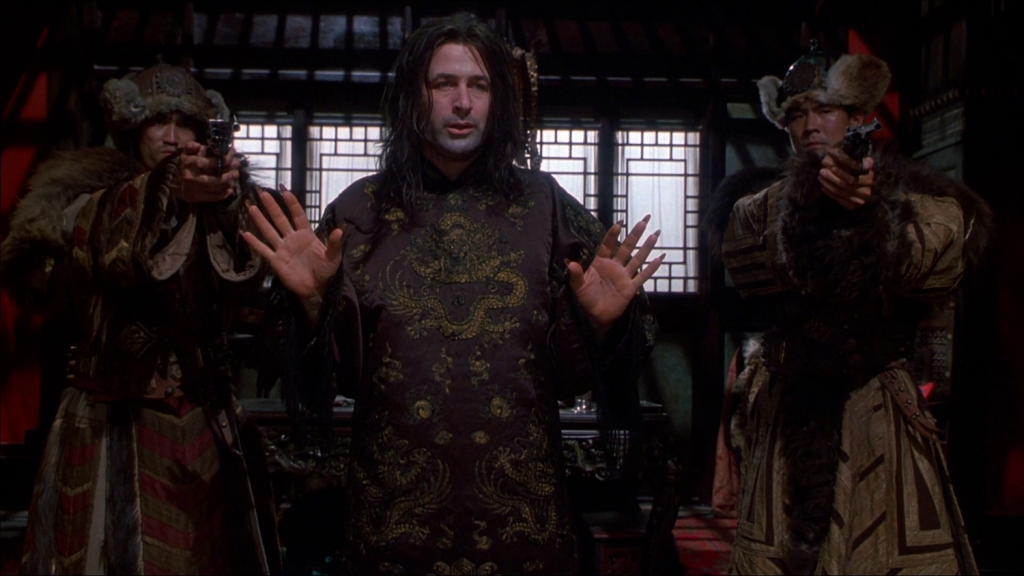
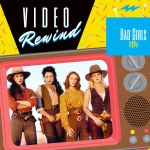






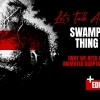


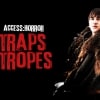
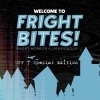
Follow Us!